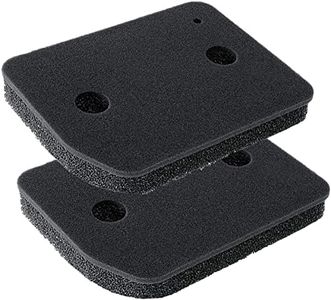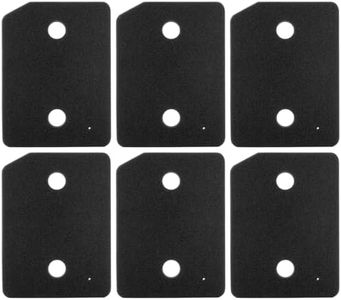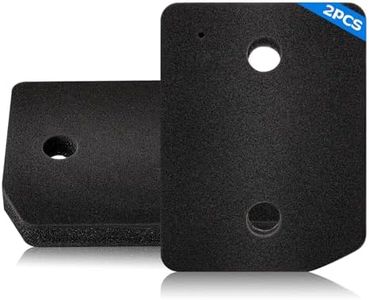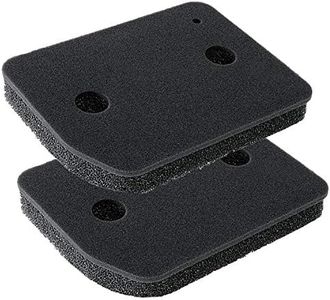We Use CookiesWe use cookies to enhance the security, performance,
functionality and for analytical and promotional activities. By continuing to browse this site you
are agreeing to our privacy policy
4 Best Heat Pump Dryers
From leading brands and best sellers available on the web.Buying Guide for the Best Heat Pump Dryers
Choosing a heat pump dryer can make your laundry routine more efficient and even save energy in the long run. These dryers use advanced technology to dry clothes gently at lower temperatures, which not only protects your fabrics but also reduces electricity use. When selecting the right heat pump dryer for your needs, consider your household size, typical laundry habits, and the space where the machine will be installed. Familiarizing yourself with the main features and specifications will help you pick a dryer that offers the best mix of performance, efficiency, and convenience for your lifestyle.CapacityCapacity refers to how much laundry the dryer can handle in a single cycle, usually measured in kilograms. This is important because it determines how many clothes you can dry at once. Smaller capacities (7-8 kg) are suitable for singles or couples who do light laundry loads, while larger capacities (9 kg and above) are better for families or those who need to dry bulky items like bedding. To choose the right capacity, consider how much laundry you do in a typical week and the size of your household. Picking a capacity that matches your laundry needs prevents overloading (which hurts performance) or underuse (which wastes energy).
Energy EfficiencyEnergy efficiency measures how much electricity the dryer uses to dry your clothes and is usually indicated by an energy rating label. The higher the rating, the less energy it consumes. This matters because a more efficient dryer can cut down on your electricity bills and is better for the environment. Generally, energy efficiency is rated from A+++ (most efficient) downwards. If you run your dryer often, going for the highest energy rating might make the most sense, while occasional users might not notice as much savings with extremely high ratings.
Drying ProgramsDrying programs are pre-set options that use different combinations of heat, time, and moisture-sensing to suit various types of fabrics or loads, such as cottons, synthetics, or delicates. The value lies in their ability to dry clothes properly without damage, making laundry care easier. Some dryers offer just a few basic programs, while others have specialized ones for sportswear, wool, or quick-dry cycles. Think about the types of clothes you usually wash and opt for a dryer that offers programs tailored to your regular laundry types to get the best care for your garments.
Sensor TechnologySensor technology in heat pump dryers detects moisture levels in the laundry and stops the machine when clothes reach the desired dryness. This is important because it avoids over-drying (which can damage clothes and waste energy) and under-drying (which means your clothes may still be damp). Some dryers come with basic moisture sensors, while others offer advanced sensors that adjust the cycle in real-time. If you value precision and want your clothes to last longer, look for a model with reliable and sensitive sensor technology.
Noise LevelNoise level tells you how loud the dryer will be while running, usually measured in decibels (dB). This matters if your laundry area is close to living or sleeping spaces. Lower noise levels mean quieter operation, which can be more comfortable in shared or compact homes. Values under 65 dB are generally considered quiet, while higher numbers might be noticed more. For open-plan homes or where laundry is done at night, prioritize models with lower noise levels.
Size and Installation TypeSize means the physical dimensions of the dryer, and installation type refers to whether it is freestanding or designed to be stacked or built-in with other appliances. This spec is key if you have limited space in your home. Standard machines fit under most countertops, but larger or special installations require more planning. Measure your available space carefully and consider door swing and ventilation needs. Choose a dryer that not only fits your clothes but also fits comfortably in your laundry area.
Filter and Condenser MaintenanceAll heat pump dryers require regular cleaning of filters and, for some, the condenser unit to maintain performance and efficiency. This includes removing lint and possibly rinsing the condenser. Some models make this easier with accessible, self-cleaning, or easily removable components, while others require more manual effort. If you prefer low-maintenance appliances, look for dryers that offer simple and clear maintenance routines or features that minimize the upkeep.



